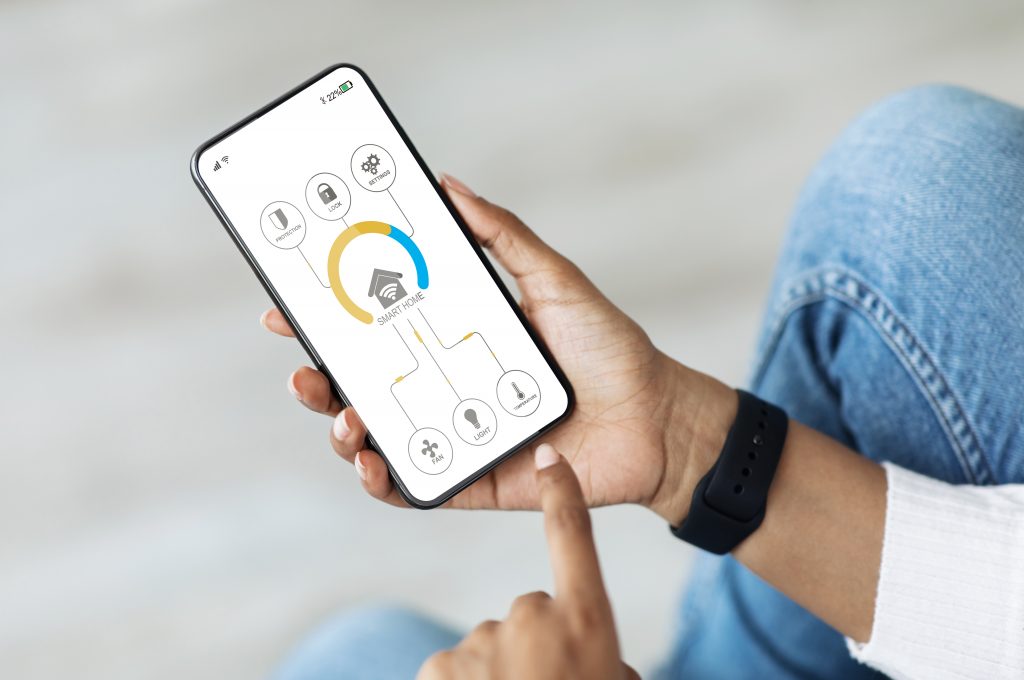
Best Cross-Platform App Development Frameworks for 2022
Building applications, while choosing the right framework for the application, and making it cross-platform as well as responsive is an extensive process. With the world of technology constantly expanding and shifting and with new frameworks continuously being released, the process can become overwhelming before development even begins.
What is cross-platform development?
There has been a historical hustle for developing Android and iOS apps separately. Separating an app through different frameworks influences and increases the amount of developer hours required to build two separate apps. In turn, the time and resources required for the project also increase. However, the concept “Write Once, Deploy Everywhere (WODE)” became the promise of many development frameworks over the past decade, whose goal is to ease the pain of writing multiple native applications. WODE refers to the ability to write an app once—using a single development stack while maintaining the ability to deploy the application to all desired platforms (e.g., Android, iOS, Windows, etc.). Ideally, the use of a cross-platform framework is conducted without sacrificing maintainability, performance, or user experience (UX).
Throughout time, these frameworks have been refined and improved with occasional feature updates, and the cross-platform frameworks have also grown to see a support from larger Dev communities.
Do you need a cross-platform app? Below is a list of the top frameworks to consider for your next cross-platform app development project.
1. React Native
React Native is an open-source UI software framework created by Meta Platforms, Inc (Basically Facebook). It is used to develop applications for Android, Android TV, iOS, macOS, tvOS, Web, Windows, and UWP by enabling developers to use the React framework along with native platform capabilities.
Metova tends to prefer React Native as a company, since it is written in Javascript, which many developers know. As React Native incorporates React, using the framework makes it easier to onboard new developers to the project – so even if our client takes their application in-house after we’re done, they’re still able to maintain it with usually existing staff.
Pros:
- React Native accelerates the development process up to 30% as it lets you use the same codebase for multiple platforms.
- The Common Code-base also reduces the cost of development as companies only need to hire one team for multiple platforms.
- React Native has a rich ecosystem i.e., an abundance of libraries and tools, which increases the productivity of developers.
- One amazing feature of ReactNative is its seamless integration with native apps.
- It is supported by external tools like Bitrise, CircleCI, and Code Magic
Cons:
- Hard to debug since it is developed using Javascript, Objective-C, Java, and C / C ++.
- Testing is more challenging. Testing time is more than that in native apps.
- React Native has inferior android support.
- Since React Native is not a native solution, it has to create a mechanism between Javascript and the native world.
- Creating a hard-core team of developers who are well-versed in both web and native technologies is hard.
2. Flutter
Created by Google, Flutter is a cross-platform development framework used to build apps for iOS, Android, and Google Fuchsia. Flutter is an open-source SDK that enables developers to build 2-D apps. Flutter is written in a language that is (pretty much) only used for Flutter, so it’s harder to find a developer for it. The framework does however, have a large community and well-managed documents for referral.
Google has announced Flutter 3 in its Google I/O 2022, which suggests potential new improvements and features.
Pros:
- Hot reloading – Any changes made to the code get updated fast, which helps in debugging.
- The language used in Flutter is Dart, which is quite easy to learn.
- Highly Portable- Due to good portability, it can run on several devices.
- Code Reusability- Due to code reusability, your app requires less testing and thus, saves time and makes the development process faster.
- Customization and Integration- Flutter allows its users to leverage overlays, graphics, videos, pictures, etc. It also offers seamless integration and full control over every pixel on the screen.
Cons:
- Young Technology– the framework lacks advanced features with libraries being in the pre-alpha stage.
- Dart- Being a new language, Dart lacks many features with existing features unrefined and it’s hard to make changes in it.
- Flutter doesn’t support third-party libraries.
- Flutter occupies a lot of space and is time-consuming as it takes a longer time to update and download.
3. Progressive Web Application
PWAs belong to an entirely different app category, but they can be opened on mobiles as well. These are web applications that can be run within a browser. Hence, they are cross-platform in their essence because you can open them on almost any device including desktops and mobiles. Usually, PWAs are developed using web technologies such as HTML+CSS+JavaScript (and JS frameworks like Angular or Vue).
Pros:
- Quick page loading – PWAs operate more than 2-3 times faster than regular responsive websites.
- No need to install and update –Just like any website, users don’t need to update PWAs. Being opened within the web browsers, their installation is also not obligatory. Nevertheless, users are able to add them to the mobile devices’ home screen similar to native applications.
- Work offline or with a slow internet connection –PWAs are great for their ability to cache information in the service worker file. Besides, all the actions that you make during the offline session will be applied once you go online.
- Incredibly light – PWAs take much less space compared to native apps. For instance, by introducing PWA technology to their website, Pinterest lowered their app size from 9.6 MB for Android and 56 MB for iOS to 150 KB.
Cons:
- Limited support for device features – Some device features can’t be accessed using current web browser capabilities. It’s especially true concerning PWA iOS features to support such as cameras, motion sensors, beacons, and many more. Hence, PWA compatibility on iOS can be limited and buggy.
- Higher battery usage – PWAs are developed using JavaScript that is harder to process by mobiles than native applications.
- Browser-dependent – PWA works well on the most recent versions of popular browsers. However, if a user has an out-of-date version some uncommon browser bugs and errors are possible.
4. Ionic
Ionic is an open-source, cross-platform framework that helps developers build hybrid apps. It is based on standardized web technologies such as HTML, CSS, and JavaScript, and it allows web developers to create apps using their abilities. Ionic’s universal web components can be used with any JavaScript framework, such as Angular, React, Vue, or even no framework at all. It also has back-end connectors to AWS, Azure, and Firebase.
Pros:
- Developer Friendly -Ionic touts itself as the only mobile stack that allows developers to create apps for all major platforms with a single codebase.
- Native and Web optimized apps – Ionic, which employs native software development kits to bring native app UI standards and device functionalities together, emulates native app UI principles. It keeps all of the open web’s power and flexibility.
- Platform specific adaptive style – User can choose from various application styles depending on the platform on which it will run. The components are just stylized to follow the device guidelines.
- Testing convenience –Built-in testing and debugging tools in browsers make the entire testing process more convenient.
Cons:
- Troubling Debugging – Debugging an Ionic application can be time consuming and difficult.
- Vulnerability of local storage – Data that is sensitive should not be saved on a local storage device that can be readily exploited.
- Absence of hot reloading
- Application size – Developing an app with HTML, CSS, and JavaScript requires a lot of code and the addition of libraries, plugins, dependencies, and other components, all of which add weight to the program compared to native ones. To make your app smaller, lower the size of the icons and remove any unnecessary styles, fonts, or images.
5. Apache Cordova (Formerly Knowns as Phonegap)
Apache Cordova is an Open Source framework that helps build hybrid applications which work on most mobile platforms like Android, iOS, Blackberry, and Windows Phone. The framework provides a container that bridges the native APIs to the web view. Apache Cordova makes the application development simpler using CLI. It’s a developer-friendly cross-platform development framework that builds app using CSS3, HTML, and JavaScript.
Pros:
- With Apache Cordova, you can make integrated payments via the App Store or Android Market.
- A single code for multi-platforms (iOS, Android, Windows 7, and the web).
- Apache Cordova has large community support.
- With a wide range of UI libraries, you can create a better user experience for customers.
- Faster development process due to flexibility.
Cons:
- Latency in performance.
- Due to the lack of a bunch of pre-built UI transitions, widgets, and controls, it takes time to create native-like polished apps.
- Not suitable for creating gaming apps or apps that demand high graphics.
Not sure where to start?
Let’s have a conversation to see which framework works best for your application’s needs. Contact us.



